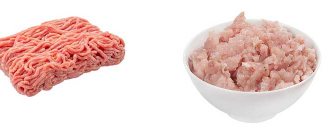Lentils are the lowest calorie plant in the legume family. People began to grow this useful crop from the most ancient times, long before the beginning of our era. Mentions of lentil dishes can even be found in the Bible. Nowadays, many diets have been developed based on these grains, and cereals are also a popular product among people who adhere to a balanced diet.
- Nutritional value of the product
- Calorie content of dry lentils
- How many calories are in cooked lentils?
- Popular dietary lentil dishes
Composition of BJU lentils
Proteins, fats and carbohydrates are combined in the plant optimally for people who care about low-calorie food. 100 grams of lentils contain 20 grams of healthy carbohydrates, which is quite a bit compared to the composition of fatty acids in other legumes.
The cereal is also distinguished by a large amount of protein per 100 grams (0.9%) and a small proportion of fat (only 0.4%). In addition, an impressive portion of the fats contained in lentils are polyunsaturated – these elements contribute to weight loss and normalization of the body.
If you put it all together, the BJU of lentils looks like this:
- proteins – 24 g;
- carbohydrates – 46.3 g;
- fats – 1.5 g.
Judging by the chemical composition, the benefits and harms of this crop lean toward the first “scale.”
Product calorie analysis
SHARE OF BZHU IN CALORIES
Ratio of proteins, fats and carbohydrates:
Knowing the contribution of proteins, fats and carbohydrates to calorie content, you can understand how well a product or diet meets the standards of a healthy diet or the requirements of a certain diet. For example, the US and Russian Departments of Health recommend 10-12% of calories come from protein, 30% from fat and 58-60% from carbohydrates. The Atkins diet recommends low carbohydrate intake, although other diets focus on low fat intake.
If more energy is expended than it is received, the body begins to use up fat reserves, and body weight decreases.
Try filling out your food diary right now without registration.
Find out your additional calorie expenditure for training and get updated recommendations absolutely free.
DATE FOR ACHIEVEMENT OF THE GOAL
Lentils, grain
rich in vitamins and minerals such as: vitamin B1 - 33.3%, vitamin B2 - 11.7%, choline - 19.3%, vitamin B5 - 24%, vitamin B6 - 27%, vitamin B9 - 22.5% , vitamin PP - 27.5%, potassium - 26.9%, silicon - 266.7%, magnesium - 20%, phosphorus - 48.8%, iron - 65.6%, cobalt - 116%, manganese - 59 .5%, copper - 66%, molybdenum - 110.7%, selenium - 35.6%, chromium - 21.6%, zinc - 20.2%
- Vitamin B1
is part of the most important enzymes of carbohydrate and energy metabolism, providing the body with energy and plastic substances, as well as the metabolism of branched amino acids. A lack of this vitamin leads to serious disorders of the nervous, digestive and cardiovascular systems. - Vitamin B2
is involved in redox reactions, helps to increase the color sensitivity of the visual analyzer and dark adaptation. Insufficient intake of vitamin B2 is accompanied by impaired condition of the skin, mucous membranes, and impaired light and twilight vision. - Choline
is part of lecithin, plays a role in the synthesis and metabolism of phospholipids in the liver, is a source of free methyl groups, and acts as a lipotropic factor. - Vitamin B5
is involved in protein, fat, carbohydrate metabolism, cholesterol metabolism, the synthesis of a number of hormones, hemoglobin, promotes the absorption of amino acids and sugars in the intestines, and supports the function of the adrenal cortex. A lack of pantothenic acid can lead to damage to the skin and mucous membranes. - Vitamin B6
is involved in maintaining the immune response, processes of inhibition and excitation in the central nervous system, in the transformation of amino acids, the metabolism of tryptophan, lipids and nucleic acids, promotes the normal formation of red blood cells, and maintaining normal levels of homocysteine in the blood. Insufficient intake of vitamin B6 is accompanied by decreased appetite, impaired skin condition, and the development of homocysteinemia and anemia. - Vitamin B9
as a coenzyme is involved in the metabolism of nucleic acids and amino acids. Folate deficiency leads to disruption of the synthesis of nucleic acids and proteins, resulting in inhibition of cell growth and division, especially in rapidly proliferating tissues: bone marrow, intestinal epithelium, etc. Insufficient folate intake during pregnancy is one of the causes of prematurity, malnutrition, and congenital deformities and child development disorders. A strong relationship has been shown between folate and homocysteine levels and the risk of cardiovascular disease. - Vitamin PP
is involved in redox reactions of energy metabolism. Insufficient vitamin intake is accompanied by disruption of the normal condition of the skin, gastrointestinal tract and nervous system. - Potassium
is the main intracellular ion that takes part in the regulation of water, acid and electrolyte balance, and is involved in the processes of conducting nerve impulses and regulating blood pressure. - Silicon
is included as a structural component in glycosaminoglycans and stimulates collagen synthesis. - Magnesium
is involved in energy metabolism, the synthesis of proteins, nucleic acids, has a stabilizing effect on membranes, and is necessary to maintain the homeostasis of calcium, potassium and sodium. A lack of magnesium leads to hypomagnesemia, an increased risk of developing hypertension and heart disease. - Phosphorus
takes part in many physiological processes, including energy metabolism, regulates acid-base balance, is part of phospholipids, nucleotides and nucleic acids, and is necessary for the mineralization of bones and teeth. Deficiency leads to anorexia, anemia, and rickets. - Iron
is part of proteins with various functions, including enzymes. Participates in the transport of electrons and oxygen, ensures the occurrence of redox reactions and activation of peroxidation. Insufficient consumption leads to hypochromic anemia, myoglobin deficiency atony of skeletal muscles, increased fatigue, myocardiopathy, and atrophic gastritis. - Cobalt
is part of vitamin B12. Activates enzymes of fatty acid metabolism and folic acid metabolism. - Manganese
is involved in the formation of bone and connective tissue, and is part of enzymes involved in the metabolism of amino acids, carbohydrates, and catecholamines; necessary for the synthesis of cholesterol and nucleotides. Insufficient consumption is accompanied by slower growth, disturbances in the reproductive system, increased fragility of bone tissue, and disturbances in carbohydrate and lipid metabolism. - Copper
is part of enzymes that have redox activity and are involved in the metabolism of iron, stimulates the absorption of proteins and carbohydrates. Participates in the processes of providing oxygen to the tissues of the human body. Deficiency is manifested by disturbances in the formation of the cardiovascular system and skeleton, and the development of connective tissue dysplasia. - Molybdenum
is a cofactor for many enzymes that ensure the metabolism of sulfur-containing amino acids, purines and pyrimidines. - Selenium
is an essential element of the antioxidant defense system of the human body, has an immunomodulatory effect, and is involved in the regulation of the action of thyroid hormones. Deficiency leads to Kashin-Beck disease (osteoarthritis with multiple deformities of the joints, spine and limbs), Keshan disease (endemic myocardiopathy), and hereditary thrombasthenia. - Chromium
is involved in the regulation of blood glucose levels, enhancing the effect of insulin. Deficiency leads to decreased glucose tolerance. - Zinc
is part of more than 300 enzymes and is involved in the processes of synthesis and breakdown of carbohydrates, proteins, fats, nucleic acids and in the regulation of the expression of a number of genes. Insufficient consumption leads to anemia, secondary immunodeficiency, liver cirrhosis, sexual dysfunction, and the presence of fetal malformations. Research in recent years has revealed the ability of high doses of zinc to disrupt the absorption of copper and thereby contribute to the development of anemia.
more hide
You can see the complete directory of the most useful products in the application.
The nutritional value
— content of carbohydrates, fats and proteins in the product.
Nutritional value of food product
- a set of properties of a food product, in the presence of which the physiological needs of a person for the necessary substances and energy are satisfied.
Vitamins
, organic substances required in small quantities in the diet of both humans and most vertebrates. Vitamin synthesis is usually carried out by plants, not animals. A person's daily requirement for vitamins is only a few milligrams or micrograms. Unlike inorganic substances, vitamins are destroyed by strong heat. Many vitamins are unstable and are “lost” during cooking or food processing.
Lentils are one of the oldest foods cultivated by humans. It is characterized by a high content of substances beneficial to the body, is easily digestible and quickly saturates. The low calorie content of lentils makes it possible to use it for fasting days and dietary nutrition.
Energy value of the product
The calorie content of lentils may vary depending on the type of plant. 100 grams of green grains contain 323 units, red lentils of the same volume differ in nutritional value by 314 kcal, the more common brown type of grain includes 116 units per 100 grams. The least calorie option is yellow lentils – 105 kcal.
These indicators correspond specifically to dry lentils, that is, uncooked cereals. Therefore, when counting calories for a diet, it is necessary to proceed from completely different indicators, which we will outline below. The calorie content of sprouted lentils also changes. This product has an energy value of about 106 kcal per 100 grams. As you can see, this figure is close to the least high-calorie yellow lentils, which is why sprouted grains are so popular for weight loss.
Composition of vitamins, beneficial and medicinal properties for health
Lentils can easily replace meat for a person; they also have vegetable protein, which is very well absorbed in the human body. Its composition proves to us that a very small amount of lentils can satisfy hunger and thereby provide the body with many useful enzymes.
In turn, do not forget that sprouted lentils have much more beneficial enzymes than any other plant. It is more effective in the fight against various diseases.
- The chemical composition of this legume is also very large. The composition, among other useful substances, contains natural sugar, a large amount of starch, as well as acids such as Omega-3 and Omega-6. Consuming lentil dishes regularly will improve your digestive system. Eating lentils is also useful for preventive purposes.
- Lentils also contain the amino acid tryptophan, which releases serotonin. It has a positive effect on the human nervous system, maintaining excellent mood, tranquility and inner peace.
What beneficial properties does viburnum contain?
You will find a list of vitamins, beneficial properties and contraindications of blueberries on this page:
- As mentioned above, lentils contain a large number of minerals that are responsible for the circulatory and cardiovascular systems. It is very important to cleanse your blood vessels, strengthen hemoglobin, and also help strengthen the heart muscle.
- Lentils are very useful for women who are planning to lose excess weight. If you use a diet in which lentils are the main product for cooking, you will achieve effective results in the shortest possible time.
- Lentils contribute to the normal functioning of the entire body, saturating it with useful microelements and vitamins.
- It is also worth thinking about the environmental problem, which is aggravated throughout the world. And here lentils bring great benefits because, as you know, they are an environmentally friendly product that has the ability to absorb harmful substances, nitrates, toxins and radionuclides.
- Today, people get sick a lot and often, this is an indication that they have a very weak immune system. To increase it, you need to eat lentils, as they contain vitamin C, which is so necessary for the immune system.
- Lentils are useful for people who suffer from cancer. After all, it is this legume that provides good prevention, since it contains isoflavones, which accompany this in every possible way.
- People suffering from diabetes can easily use lentils to replace bread and even porridge from any cereal. After all, lentils do not increase blood sugar and are well absorbed, which is necessary if you have diabetes.
- Lentils are the so-called “people's doctor”. It helps with urolithiasis and perfectly relieves burns.
Varieties
Lentils have many varieties, they differ in color and are used for different types of diseases. Their taste is reminiscent of nuts.
- Green lentils are used for hypertension, ulcers, hepatitis, pyelonephritis, rheumatism, cholecystitis. It does not become soft when cooked, and is added to salads and meat.
- Red lentils are used for anemia because they contain a lot of protein and iron. It is used for preparing first courses, as it tastes good and boils easily.
- Brown lentils are used for tuberculosis, lung disease, injuries and weak bones. It is added to first courses, as well as casseroles.
- Black lentils are very small, similar to caviar.
- French lentils have a very strong aroma and retain their color and taste when cooked.
What are the benefits of lentils?
Lentils are very beneficial for women because they contain a high percentage of folic acid.
It is also very useful for children It begins to be given from the age of two so that the child grows healthy and strong. They even develop a special diet and dishes that include lentils.
For men , the benefit of lentils lies in its ability to increase male strength in sexual relations.
Calorie content of lentils for different preparations
Cooked lentils can have different nutritional values depending on how they are processed. Boiled cereals have the least calorie content, 100 grams of which contain only 111 kilocalories. Sprouted legumes have higher values (119 kcal), but are characterized by a higher content of amino acids, water-soluble antioxidants, fiber and some vitamins compared to raw legumes.

Lentil soup with vegetables (onions, peppers and tomatoes) includes 52 units (100 g), chicken soup with this legume can contain 122-162 kcal in 1 serving per 300 grams, depending on the recipe. The nutritional value of water porridge with the addition of various ingredients (mushrooms, carrots, garlic, onions) is characterized by 131-216 units, depending on the volume of added components.
Harm and contraindications
Lentils were described in great detail on the good side, but like any other ingredient, they also have certain harms and recommendations when their use is undesirable :
- It is not recommended to eat it by people who suffer from dysbiosis or have certain problems , as this legume increases gas formation.
- People who have chronic gout are advised to eat it boiled because it is poorly digested in the stomach.
- You also need to pay attention to the fact that lentils contain phytates, which slow down the absorption of minerals such as calcium and iron in the body, so people with weak bones should not use large portions.
- Undoubtedly, lentils are also harmful for people who are allergic to this product.
Recipes for dietary dishes with lentils
There are several simple dishes that will suit many followers of a healthy lifestyle.
If you are on a diet, try cooking some of them and see from your own experience that lentils perfectly satisfy your hunger, even if you consume very little product at a time.
Lentil soup.
To prepare, you will need 1 glass of milk, 1 glass of water, 1 glass of red lentils, 4 glasses of broth (it is better to use chicken or turkey), onions, medium carrots, 2 raw yolks, a glass of flour, herbs and croutons - to taste.
Fry the onion until soft, add flour to it and stir. Pour a glass of water into the broth, add a little salt and add red lentils and grated carrots, then simmer over low heat for 20-30 minutes. After the first 15 minutes, add the onion and stir constantly.
As soon as the lentils become soft, add the pre-beaten milk and egg yolks. Cook for another 5 minutes, stirring everything thoroughly until smooth. After this, beat the mixture with a blender to obtain a “creamy” consistency. Serve with herbs and croutons.

Stewed lentils with vegetables.
Yellow or red lentils work best for this recipe. Prepare a glass of lentils, 1 carrot, 1 onion, 1 sweet pepper, 3 medium-sized tomatoes, 2 cloves of garlic.
Wash the lentils and boil until tender (about 30 minutes). At this time, fry finely chopped onion in a frying pan, add grated carrots and diced pepper to it. Remove the skins from the tomatoes and finely chop with the rest of the vegetables. As soon as the lentils are ready, drain the broth and add the cereal to the rest of the ingredients. Season everything with salt and pepper to taste. Add finely chopped garlic and simmer covered for about 10 minutes.
Benefits of boiled lentils
The following benefits of boiled lentils are known:
- the product is saturated with easily digestible vegetable protein, making it useful for normalizing the functioning of the gastrointestinal tract;
- lentils are considered one of the most effective plant sources of iron;
- lentil porridge is indicated for strengthening the immune system;
- due to its richness in antioxidants, the product is recommended for the prevention of intestinal and breast cancer;
- doctors recommend eating lentils to prevent diseases of the genitourinary system;
- due to the large amount of saturated fatty acids, dietary fiber, vegetable proteins and fats in lentils, legumes are an indispensable component of the diet of vegetarians;
- Potassium in lentils is good for the health of the heart, blood vessels, and nervous system.







